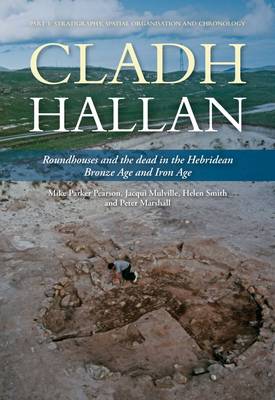
- Afhalen na 1 uur in een winkel met voorraad
- Gratis thuislevering in België vanaf € 30
- Ruim aanbod met 7 miljoen producten
- Afhalen na 1 uur in een winkel met voorraad
- Gratis thuislevering in België vanaf € 30
- Ruim aanbod met 7 miljoen producten
Zoeken
Cladh Hallan
Roundhouses and the dead in the Hebridean Bronze Age and Iron Age, Part I: stratigraphy, spatial organisation and chronology
Mike Parker Pearson, Jacqui Mulville, Helen Smith, Peter Marshall
€ 58,95
+ 117 punten
Omschrijving
The first look at the evidence from excavations at the site of Cladh Hallan (South Uist, Western Isles of Scotland).
Specificaties
Betrokkenen
- Auteur(s):
- Uitgeverij:
Inhoud
- Aantal bladzijden:
- 568
- Reeks:
Eigenschappen
- Productcode (EAN):
- 9781789256932
- Verschijningsdatum:
- 15/08/2021
- Uitvoering:
- Hardcover
- Afmetingen:
- 306 mm x 216 mm
- Gewicht:
- 2314 g

Alleen bij Standaard Boekhandel
+ 117 punten op je klantenkaart van Standaard Boekhandel
Beoordelingen
We publiceren alleen reviews die voldoen aan de voorwaarden voor reviews. Bekijk onze voorwaarden voor reviews.








